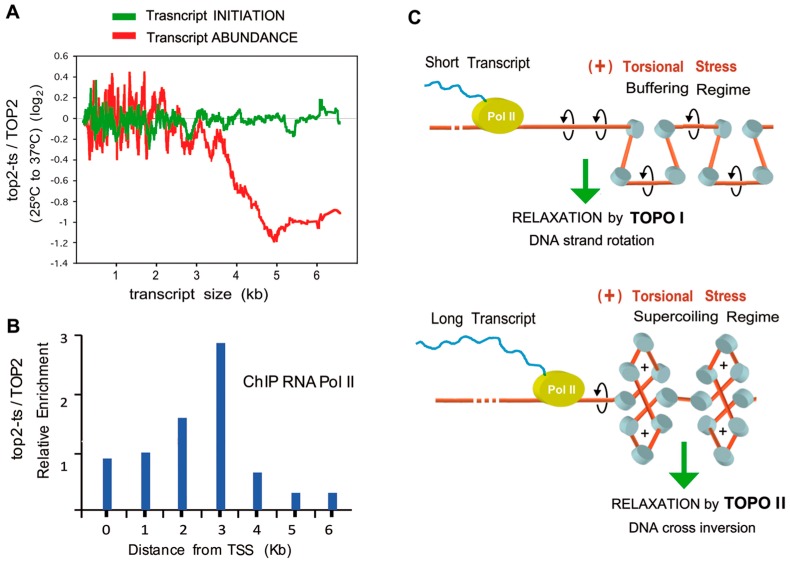Figure 4.
Long term effects of topo II inactivation on transcription. (A) Effects of topo II inactivation on transcription according to gene size. Data from GRO experiments TOP2 vs top2-ts (green line) and RNA abundance observed by microarrays (red line); (B) Intragenic distribution of RNA polymerase II after topo II inactivation. Histograms show the ratio of Pol II density of top2-ts relative to control cells; (C) Role of topo II during the transcription of long genes. During transcriptional elongation, (+) torsional stress increases in a transcript-length dependent manner. (+) torsional stress diffuses to downstream regions, where it is buffered by chromatin and nucleosome architecture. When this buffering capacity is surpassed, downstream chromatin enters the supercoiling regime. In this chromatin conformation, the DNA strand-rotation mechanism of topo I is not efficient and only the DNA cross-inversion mechanism of topo II is able to remove the (+) DNA supercoils, which would otherwise stall the progression of the RNA polymerase. Graphs (A–C) reproduce results and the model reported by Joshi et al. [11].

